The Decline of the Open Kitchen
The pandemic that began in 2020 was life-changing in all aspects, including home design. As workers stayed home to work remotely, they began to appreciate what a difference more space could make. Before long, the hottest housing market ever emerged as households sought larger homes with more creature comforts.
What many found were homes that had been designed and built for busy dual-income families featuring a large bright “open kitchen.” Instead of separating the cook from the action in the den or living room, open floor plans allow cooking, eating, TV watching, working and socializing to take place in one large contiguous space. This was embraced as a liberating innovation that promoted connectivity for overscheduled families to see more of each other, but the result was more noise, more messes to look at, and a more chaotic environment.
For luxury homeowners who value privacy, relaxation, and comfort, the open kitchen plan has had its day. Room differentiation makes a huge difference in creating an elevated lifestyle. One way to do that is to be more intentional with interior design, wall placement, and traffic flow. Good wall placement helps establish the desired ambiance for each space. The den is a family retreat again, the living room welcomes visitors and clients, and the kitchen is no longer party central. Explains MansionGlobal.com, separating rooms makes each one feel properly proportioned and easier to furnish. An open plan must be more cohesive, while defined rooms can have their own personalities and colorways.
—
Mansion Global Article – Link
The residences at 111 West 57th Street are among the loftiest in Manhattan, and their floor plans got Nicholas Potts thinking. From 2014 to 2016, he worked at SHoP Architects, the firm behind the sky-high condos, and he watched as Studio Scofield’s interior design team put walls around the building’s kitchens, sitting rooms and wet bars in the larger, more expensive units. To Mr. Potts, this signaled an end to the usual open kitchen.
After relocating to Washington, D.C. from New York City, Mr. Potts started his eponymous art and architecture practice. While remodeling his co-op dwelling with his partner, Aaron Wile, a curator at the National Gallery of Art, they opted to move walls, rather than to tear any down. At first, concealing lunch messes in the kitchen while working from home motivated Mr. Potts.
“Not having to be exposed to tasks you must attend to is probably the most calming thing a person can do,” Mr. Potts said.
He found that consciously sealing the kitchen off from the living room with a door and a wall made a noticeable impact. Separating the rooms made each feel properly proportioned. The living room, now more cocoon-like, was easier to furnish. Thus, what’s old is new again.
“Maybe it’s a post-pandemic thing, but nobody wants an open kitchen,” Mr. Potts said. “They want light and spaciousness, but no one wants a mess. It’s more calming, frankly, to have definition and to be able to remove yourself from a room where somebody might be on a video conference, or where you just made lunch but don’t want to do the dishes yet.”
Mansion Global spoke with Mr. Potts about how adding walls and unexpected finishes to kitchens elevates both working and entertaining from home.
Nicholas Potts: With everything in architecture, you take these wild off-ramps and on-ramps, and when I started out, I would have never pictured myself working with houses. My first job was working with cultural institutions, museums, a mausoleum in Minneapolis made of very luxurious materials—stoic, forever buildings.
With the Venice Biennale [international architecture exhibition], I got into the idea of wall application and moldings. Walls are prevalent and they define the spaces we live in, yet they’ve been contested and reworked. They have many theories around them, from being ornamented, to plain, to solid, to light. It’s rich territory, rather than being something that’s just there.
MG: How did this translate to your work on your home’s layout?
NP: I started exploring how we live and the walls that surround us. It started at my own house. We bought a co-op that had been renovated in the ’70s. It was in a lovely 1920s Beaux Arts building. Stuff had been demolished, it was impossible to furnish, the layout was nonsensical and all the ornament had been stripped down. It was a pandemic project. We lived in the apartment below while it was going on. I sourced the same lumber company that provided the millwork and moldings in the original building. Of course, in the floor plan, I wouldn’t do something totally oldschool. We’re a 21st-century family, we’re discovering that during the pandemic, it’s going to be a work-from-home situation.
MG: How did you find ways of working from home, perhaps sometimes in the kitchen, while maintaining a sense of spaciousness?
NP: There’s nothing better than a full-height pantry for having a ton of storage. It’s an efficient way to pack a lot of storage into a small footprint, which you can then offset by not having uppers [wall cabinets] everywhere. This gives the illusion of more space, and makes it feel less claustrophobic because you’re not surrounded by cabinets on all four sides at eye level. But to do a full-height pantry, you need a wall.
Rather than arbitrarily opening up a wall, find an axis of symmetry that relates to other areas of the house, or that centers around an appliance. It’s all about imposing desired lines and hierarchy in a space.
MG: Why do so many real estate listings highlight the open kitchen?
NP: My theory is that it comes from two places. The first is the HGTV effect. When you’re producing a half-hour TV program, you need to do something dramatic where it’s “one and done.” People like to see sledgehammers. That moment of demolition is in the formula for TV.
The second is the role of real estate. Every realtor’s trick is to make something small look big. You see it with wide-angle photography and open plans. When a space is a little bit too small, or the shoe doesn’t fit, they can say, “The shoe will stretch.” An open plan looks bigger than it really is because of the deception of no furniture or walls. Once you start putting in your couches, installing your TV and hanging your art, the whole mirage dissipates.
We need order in our lives. The beauty of well-designed spaces is that they frame views and they make you feel like you’re part of something that’s ordered, rational, calming and peaceful. You need to define spaces to do that.
MG: What’s the one design element that instantly elevates a kitchen?
NP: Having great materials and hardware can make a difference. I absolutely love, if I’m choosing a marble countertop, to run that as far up the wall as possible. Because it’s a little bit unexpected, it adds an opportunity for pattern and color, but it doesn’t introduce another element like a contrasting backsplash. That can create chaos. It’s having more of a good thing.
Hardware is also something I spend a lot of time thinking about, especially how to do something beautiful and unexpected. It’s an opportunity to bring in a little whimsy and do something different. In my own kitchen, I found some hand-forged brass pulls that are in the shape of a fist. It’s an opportunity to do something fun and impermanent. It’s not just the pulls. It’s the decision about exposing hinges to look more retro, or installing flush pulls or ring pulls. There’s technology in cabinets that we take for granted.
MG: Where’s your favorite place to shop for kitchen hardware?
NP: I almost always try to use something from P.E. Guerin in New York. They’ve been in business since the 1850s. They still make almost all their hardware in Greenwich Village. Their archive is astonishing, and they can make anything. It’s absolutely beautiful.
MG: Kitchens tend to be the hub when entertaining. How does defining the kitchen with walls improve the entertaining experience?
NP: You’re allowing guests to relax. The kitchen is a place for work. It’s designed around tasks like cutting food. The host is inevitably pouring drinks or doing last-minute preparations. It’s more about not making the host feel isolated. It’s important to make sure the kitchen isn’t a dead end, and that it has enough circulation space. People will want to gravitate toward the host, but it’s more about being with the host when they’re making preparations, but then having the party move on. You’re not eating at the island. You move into the living room or the dining room.
MG: What is your definition of luxury?
NP: My definition of luxury is something that’s confident and doesn’t call too much attention to itself. Confidence and consistency. Money screams, wealth whispers. You can have an amazing piece of hardware, and it doesn’t have to have a brand name slapped on it. It can be a well-made element that has a story behind it. Luxury is all about differentiation. If you’re not using the mass-produced and the common, that’s the ultimate luxury.
Get automatic new listing updates.


Queen West Office
105-15 Abell Street, Toronto, ON.
Open: Monday – Friday, 10 AM – 6 PM
(416) 994-3295

